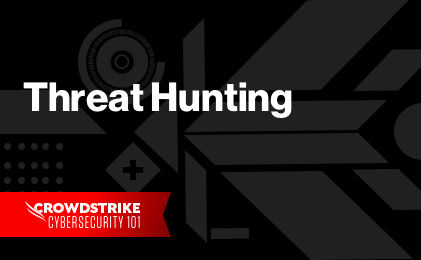Threat detection, investigation, and response (TDIR) is a cybersecurity process for finding, analyzing, and mitigating threats. Threat detection is performed through constant system and network monitoring to identify any signs of malicious activity or potential vulnerabilities. Investigating detected threats involves a detailed analysis to understand their nature, origin, and potential impact. Finally, response refers to the actions taken to neutralize the threat, repair any damage, and strengthen defenses to prevent future incidents.
In this post, we'll cover the key aspects of TDIR and what it looks like to integrate TDIR into business operations, ensuring you're equipped to handle cybersecurity challenges effectively.

2023 Threat Hunting Report
In the 2023 Threat Hunting Report, CrowdStrike’s Counter Adversary Operations team exposes the latest adversary tradecraft and provides knowledge and insights to help stop breaches.
Download NowUnderstanding threat detection
Threat detection is the process of identifying potential security threats to a system or network. As a critical first line of defense in cybersecurity, threat detection enables organizations to find and address vulnerabilities before they can be exploited.
Common cyber threats include:
- Phishing: Deceptive tactics, typically carried out via email, aiming to trick individuals into revealing sensitive information, such as passwords or credit card numbers.
- Malware: Malicious software designed to damage or disrupt systems, often by stealing, encrypting, or deleting data.
- Ransomware: A type of malware that encrypts a victim's files or locks up a victim’s system, demanding payment for their release.
- Advanced persistent threats (APTs): Long-term, targeted cyberattacks where intruders establish an undetected presence in a network to steal sensitive information over time.
Each type of cyber threat presents unique challenges, requiring specific detection strategies.
Tools like security information and event management (SIEM) and intrusion detection systems (IDSs) are commonly used in threat detection. IDSs can identify unusual network activity, and SIEM systems aggregate and analyze data from various sources to detect anomalies. In addition, threat detection can be enhanced with AI, leveraging machine learning (ML) to predict and identify new types of threats.
Threat detection in the modern cyber threat landscape comes with several challenges:
- The need to sift through a massive volume of data
- Distinguishing between false positives and genuine threats
- Adapting to the constantly evolving nature of cyber threats
To overcome these challenges, it’s key to stay up to date with the latest threat intelligence and continuously refine threat detection strategies.
The role of investigation in cybersecurity
The next stage of a TDIR strategy is threat investigation. This stage is made up of several important steps.
Step 1: Analysis and contextualization
Analysis and contextualization involve examining system behaviors, user activities, and access logs to understand the nature of the threat.
Step 2: Threat validation
Based on this initial analysis, the next step is threat validation. Threat validation involves confirming whether the detected activity is genuinely malicious or a false positive. For this step, TDIR solutions may employ AI-native behavioral analytics to accurately group and prioritize incidents, using generative AI to speed up threat analysis.
Step 3: Post-incident analysis
After the security team has completed its threat response, the team then conducts a thorough post-incident analysis to understand the root cause of the attack. This includes examining how the threat entered the system, what vulnerabilities were exploited, and how to prevent similar incidents in the future.
Effective cyber threat response
When dealing with cyber threats, an immediate response is crucial. The longer a cyber threat is active, the wider its impact may be. Threat response focuses on containment and mitigation to limit the spread and impact of the threat. To minimize damage, a swift threat response may include actions like isolating affected systems and applying security patches. Effective threat response also requires automated workflows to speed up response and boost analyst productivity. Additionally, flexible response options — through integrations with security and IT tools — allow response teams to quickly eradicate threats.
For long-term response planning, an organization should learn from the incident to fortify its defenses against future threats. This planning may include actions such as revising cybersecurity policies and updating recovery plans.
An incident response team may be comprised of many members with different roles:
- Incident manager: Coordinates the response
- Security analysts: Handle investigation and containment
- IT professionals: Work on system recovery
- Communication officers: Handle information dissemination
Integrating TDIR into business operations
Integrating TDIR into an organization’s operations is essential for maintaining robust cybersecurity. The process begins with developing a TDIR plan that aligns with the organization's specific needs and risk profile. A TDIR plan involves the following steps:
- Identifying critical assets
- Assessing potential threats
- Defining clear protocols for detection, investigation, and response
Educating staff and stakeholders about cybersecurity risks and TDIR processes is also crucial to a TDIR strategy. Provide regular training sessions and awareness programs for your organization to help build a security-conscious culture. By taking a proactive training approach, you ensure that everyone understands their role in maintaining cybersecurity.
Finally, you must adopt the right tools for effective TDIR. The ideal TDIR solution should address your current security needs and scale and adapt to meet evolving threats. By integrating advanced TDIR tools, businesses can focus on their core activities, offloading the burden of proactive cybersecurity to the experts.
Learn More
With Charlotte AI, the information security analysts need to stop breaches is simply a question away. Watch how analysts are turning hours of work into minutes and seconds — getting the context they need to drill into detections, fast.
Watch: Conversations with Charlotte AI: Rapid Assessment of Critical Detections
TDIR with the CrowdStrike Falcon platform
TDIR is a comprehensive approach to handling threats in light of the complexity of modern cyber threats. TDIR involves proactive threat detection, thorough investigation to understand and validate threats, and an effective response strategy for immediate and long-term security.
Making TDIR a part of your business operations is essential, ensuring that your organization is well prepared to handle and mitigate cyber threats.
CrowdStrike offers cutting-edge solutions like next-gen SIEM with CrowdStrike® Falcon LogScale™ and the CrowdStrike Falcon® Fusion security orchestration automation and response (SOAR) framework to enhance your TDIR capabilities. Next-gen SIEM provides advanced threat detection, leveraging AI/ML for more accurate and efficient threat identification. Falcon Fusion offers automated workflows to streamline the process of establishing an automated and rapid response.
Are you ready to level up your organization's cybersecurity posture? Explore how the CrowdStrike Falcon® platform can transform your TDIR strategy. Learn more about which Falcon platform usage plan best fits your business needs, or sign up to try it for free today.





